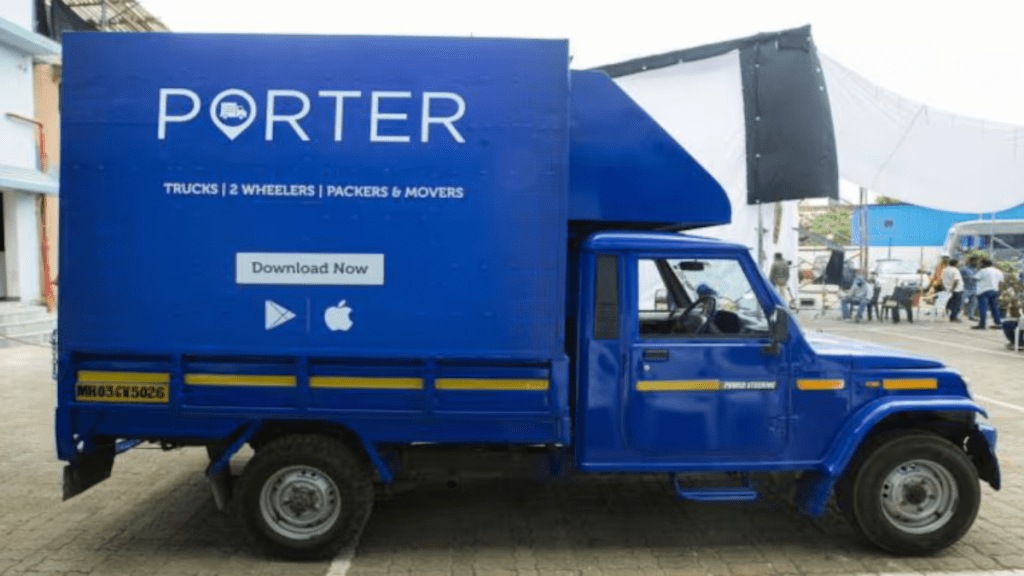Great companies are often built on simple arithmetic. Pranav Goel discovered his in 2013, while moonlighting from his job at JP Morgan in Mumbai, where he covered internet stocks like Uber for American investors. After office hours, he rode across the city to hubs where truck drivers would wash their vehicles after long hauls, trying to understand their pain points.
What Goel uncovered was simple arithmetic about carrying capacity. The drivers he met were operating at 1.5 trips per day when they could easily manage three. They were returning empty on most routes, carrying nothing but fuel costs back to base. Between jobs, they sat idle. “We realised if we could get them from one and a half trips to three, that’s a 2x efficiency gain—30% higher net income for drivers, 20% cost savings for customers, and a viable margin for us,” Goel recalled.
From empty miles to network effects
Goel’s conviction about this mathematical truth carried personal weight. His father’s timber import business, moving logs from Kandla port across India, had given him front-row access to SME logistics pain points. “That lived experience made the problem very real for us,” he said.
Armed with this insight, alongside Uttam Digga, his IIT Kharagpur roommate and fellow JP Morgan analyst, and Vikas Choudhary, a friend, they launched Porter in August 2014 with `6 lakh from personal savings.
Rather than waiting for perfect technology, they started immediately with call centers and Google Sheets, carrying forward orders manually. Within months, they were facilitating dozens of daily trips, proving that drivers would embrace consistent work and customers appreciated transparent pricing. “Don’t wait for the perfect moment, my father would say. This was something ingrained in me since childhood,”
Goel said. “It’s better to start with a suboptimal outcome than to wait endlessly for the perfect one”.
Testing conviction through crises
But testing a mathematical insight in principle and building a profitable business around it turned out to be a different challenge entirely. Twice, between 2015-2017, Porter operated with just two weeks of runway, Goel says. Rather than abandoning their thesis, the founders asked employees to carry the risk alongside them through temporary salary cuts in exchange for equity.
The breakthrough came from an unexpected direction. While most logistics companies focused on demand-side customers who paid the bills, Porter realised the path to sustainable demand ran through supply-side innovation. By carrying driver satisfaction first—introducing India’s first instant, post-trip payouts and optimising routes to ensure 80% secured return loads—they unlocked the network effects that made their marketplace work. “For our drivers, money today was more important than slightly more money tomorrow. Instant payouts changed everything—it was a massive trust-builder,” Goel said.
External validation began arriving in pieces. Peak XV Partners (then Sequoia Capital India) came on board early, writing Porter’s first institutional cheque in 2016, followed soon after by Kae Capital. Mahindra entered in 2017 as both investor and strategic partner, later deepening the relationship through a merger of its SmartShift logistics arm with Porter. Over the years, Porter added backers such as Lightstone Ventures, Tiger Global, Vitruvian Partners, and Wellington, alongside domestic funds like India Internet Fund and Elev8, gradually building a blue-chip cap table that reflected growing conviction in the company’s long-haul thesis.
Competition has tested this conviction. When Hong Kong-based Lalamove entered India with two-wheeler services and aggressive cashback campaigns, Porter faced its biggest external threat—until border tensions led to Lalamove’s ban as a Chinese app, allowing Porter to carry forward unopposed.
After eleven years of carrying their mathematical conviction through near-bankruptcy, employee loyalty tests, and competitive threats, Porter seems to be finally delivering results. Driver utilisation rates steadily improved as network effects strengthened. More drivers meant faster pickup times, attracting more customers, creating more opportunities for existing drivers. The 2x efficiency improvement calculated in 2013 began to materialise at scale. Last year, the company achieved unicorn status through an internal funding round valuing employee stock options at over $1 billion. Those employees who had carried salary cuts during the crisis years had come a full circle. Porter reported 4,300 crore revenue for FY25—nearly 50% growth—while turning profitable for the first time with54 crore in net profit. Early investor Peak XV netted over 71,200 crore after exiting its investment of116 crore, earlier this year, — representing a whopping 11x return.
But the company cannot rest easy as yet. Recently, Uber launched Courier XL in India, for couriers up to 750 kg, entering the exact market segment Porter had been methodically building for over a decade. Uber’s arrival may signal the toughest leg yet, but after eleven years of hauling their idea through empty miles and near-breakdowns, Porter’s founders know one truth better than anyone else: conviction is the only fuel that doesn’t run out.

